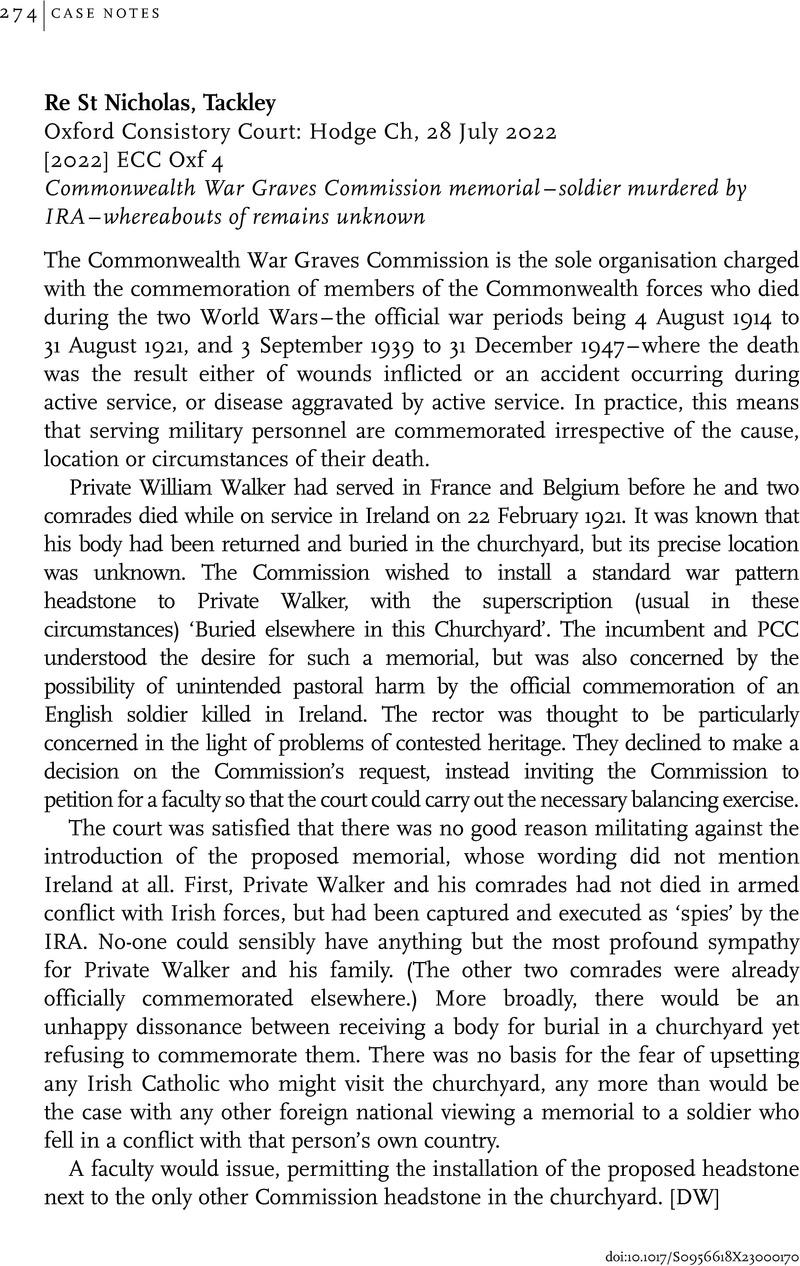No CrossRef data available.
Article contents
Re St Nicholas, Tackley
Oxford Consistory Court: Hodge Ch, 28 July 2022 [2022] ECC Oxf 4 Commonwealth War Graves Commission memorial – soldier murdered by IRA – whereabouts of remains unknown
Published online by Cambridge University Press: 28 April 2023
Abstract
An abstract is not available for this content so a preview has been provided. Please use the Get access link above for information on how to access this content.

- Type
- Case Notes
- Information
- Copyright
- Copyright © Ecclesiastical Law Society 2023



